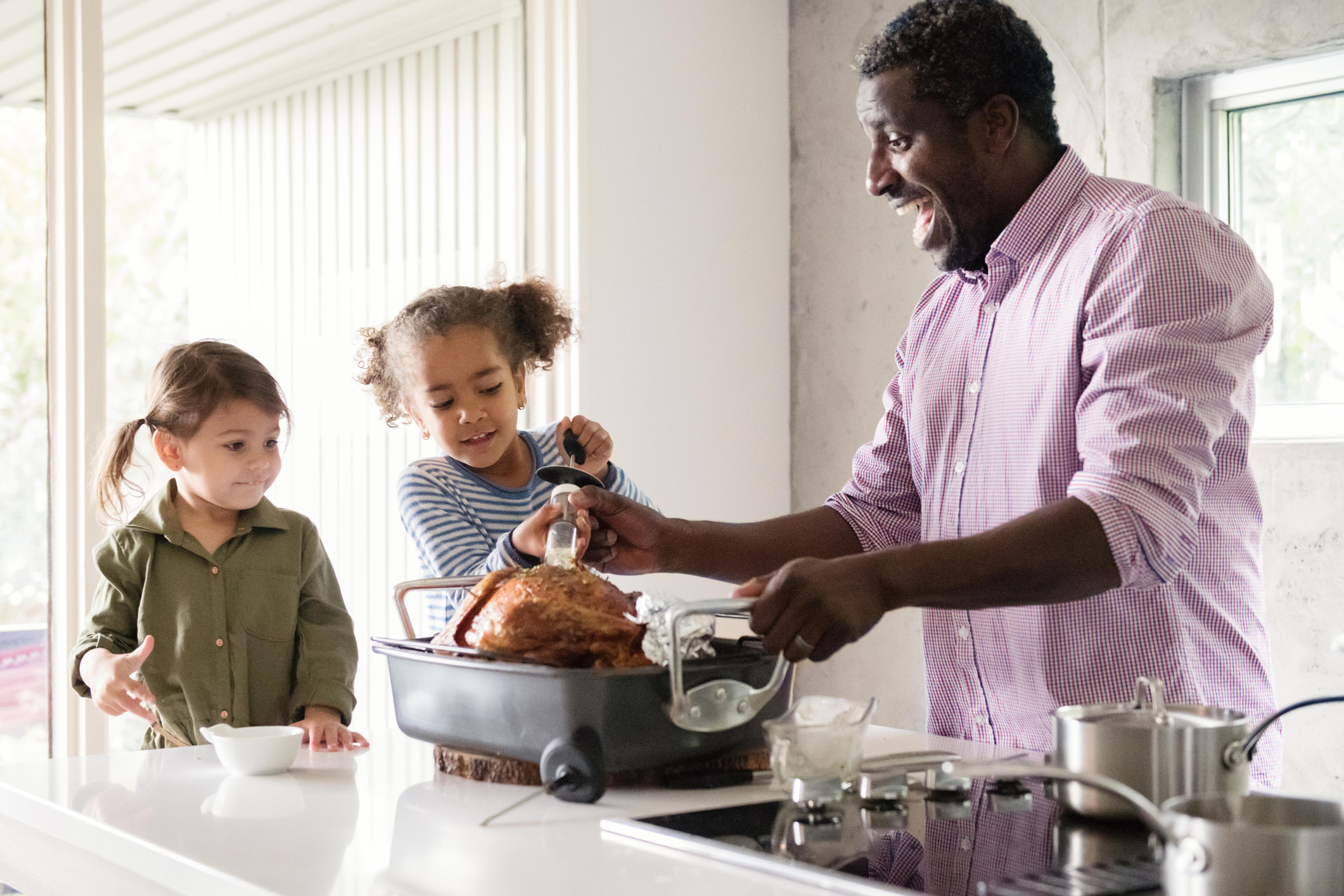
Thanksgiving Day will be here soon – the pressure is on! Cooking this special meal does not have to be intimidating. With a few food safety reminders, you can ensure that you will be able to enjoy your Thanksgiving meal while remaining grateful and healthy.
Keep it Clean
- Handwashing is the first step to protect you and everyone around your Thanksgiving table. It's also the best way to keep uninvited guests like bacteria out of your kitchen. In several observational studies, USDA found that consumers repeatedly failed to properly wash their hands, specifically not scrubbing their hands with soap for the required 20 seconds to remove germs. There are five simple steps to properly wash your hands:
- Wet your hands with clean, running water (warm or cold), turn off the tap, and apply soap.
- Lather your hands by rubbing them together with the soap. Be sure to lather the backs of your hands, between your fingers, and under your nails.
- Scrub your hands for at least 20 seconds.
- Rinse your hands well under clean, running water.
- Dry your hands using a clean towel.
- Make sure food preparation surfaces and utensils are clean and sanitized before you start cooking.
- To clean your surfaces, you will need soap and hot water, and a paper or dish towel. Use these to remove any dirt and debris you can see.
- Then, you should sanitize the surfaces to kill any remaining bacteria. Many different sanitizers can be used. An easy homemade sanitizing solution can be made by mixing one tablespoon liquid chlorine bleach with one gallon of water, or you can use a commercial sanitizer or sanitizing wipe. Allow to air dry and follow the label instructions on commercial sanitizers to determine whether you need to rinse food preparation areas after use.
- Campylobacter and Salmonella, bacteria found in poultry products, can survive on countertops and other kitchen surfaces from 4 to up to 32 hours, so make sure you repeat this step after handling raw turkey.
Meal Prep
- Keep raw meat and poultry separate from produce and cooked foods. Prepare foods that will not be cooked, such as vegetables and salads, before handling and preparing raw meat and poultry.
- Consider not washing or rinsing raw turkey. USDA research found that one in four people who wash or rinse poultry cross-contaminate other food items being prepared with germs from the poultry.
- Washing, rinsing or brining meat and poultry in salt water, vinegar or lemon juice does not destroy bacteria. If there is anything on your raw poultry that you want to remove, pat the area with a damp paper towel and immediately wash your hands.
- The only way to kill bacteria is to cook meat and poultry to a safe internal temperature by using a food thermometer. You can't see, smell or feel bacteria on meat and poultry, so you should always use a food thermometer.
- Your turkey is safe to eat when the temperature reads 165°F (74°C) in three places:
- The thickest part of the breast.
- The innermost part of the thigh.
- The innermost part of the wing.
- Your turkey is safe to eat when the temperature reads 165°F (74°C) in three places:
- If you must rinse the turkey and clean out the cavity, first take the time to remove dishes, dish drainers, dish towels, sponges and other objects from around the sink area. Then cover the area around your sink with paper towels. Place the roasting pan next to the sink, ready to receive the turkey. Clean the sink with hot soapy water, rinse well, and fill it with a few inches of cold water. Even if the cavity is partially frozen, use cold water to rinse the cavity. Cold water is still warmer than the frozen cavity. Run the water gently to prevent splashing. Make sure the water is coming out the other end of the cavity. If it isn’t, the neck or giblets may still be in there. And that’s it! No need to scrub or rinse the rest of the turkey. Hold the turkey up to let it drain into the sink and gently place the turkey in the roasting pan. Remove the paper towels, clean the sink and the area around the sink with hot soapy water, and proceed with your preparations.
Enjoy
- When cooked food is out at room temperature, it only has two hours before it becomes unsafe. So make sure you put out just enough food for your guests and place the rest in your fridge.
- Serve small portions of a large dish. You can keep the remainder of the dish warm in the oven or cold in the fridge.
- If the food is exposed to temperatures above 90°F (32°C) (like a hot car or summer picnic), refrigerate it within 1 hour.
- If you decide to reheat your dishes, be sure they reach 165°F (74°C) as measured with a food thermometer. Reheat sauces, soups and gravies by bringing them to a rolling boil.
For food safety questions, contact the USDA Meat and Poultry Hotline at 1-888-MPHotline (1-888-674-6854) or email MPHotline@usda.gov from 10 a.m. to 6 p.m. Eastern Time, Monday through Friday. The Meat and Poultry Hotline is also open on Thanksgiving Day from 8 a.m. to 2 p.m. Eastern Time.
For more Thanksgiving food safety tips, follow us on X @foodsafetygov or on Facebook at Facebook.com/FoodSafety.gov.

